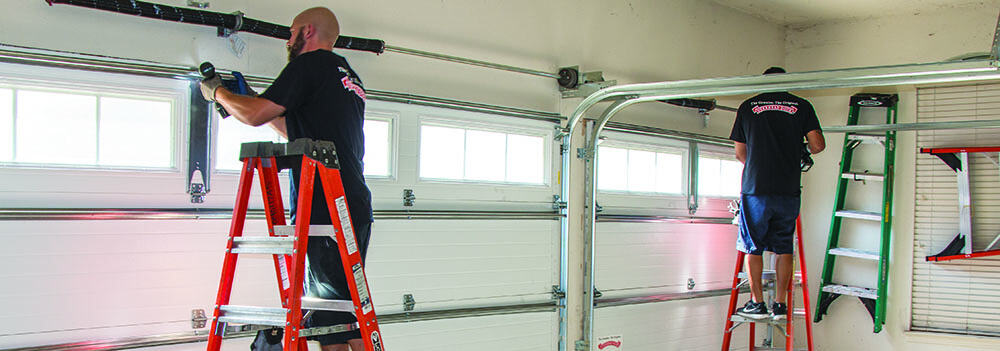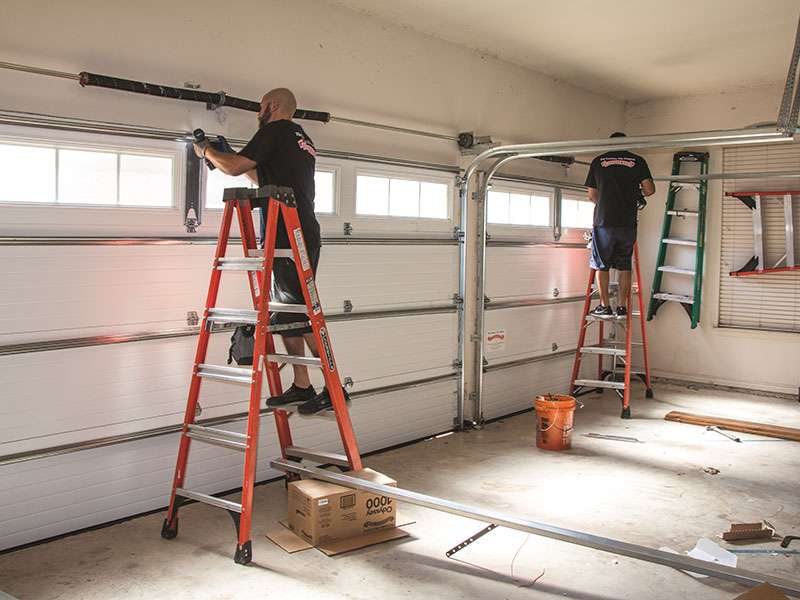Experienced Garage Door Service to Handle Common Issues Efficiently
Experienced Garage Door Service to Handle Common Issues Efficiently
Blog Article
Typical Garage Door Problems and How to Fix Them
Garage doors are essential for both security and comfort, yet they typically provide a variety of usual issues that can annoy property owners. While some concerns may show up simple to deal with, others may require an extra nuanced understanding of garage door mechanics.
Noisy Garage Door Procedure
A loud garage door operation can be a substantial source of inconvenience for home owners, commonly suggesting underlying mechanical issues. Such interruptions may originate from various reasons, including damaged rollers, loose equipment, or inadequate lubrication. Recognizing the source of the sound is vital for reliable resolution.
Over time, these parts can weaken, leading to grinding or squeaking noises as the door moves. Furthermore, loose bolts or screws in the door system can develop rattling audios throughout procedure.
Another contributing aspect is poor lubrication of the door's moving parts. Applying a high-grade lubricant to the tracks, springtimes, and rollers can greatly decrease friction and noise. House owners ought to execute this maintenance periodically to maintain ideal efficiency.
Lastly, the garage door opener might additionally generate noise because of its age or mechanical problems. If the sound lingers regardless of addressing various other variables, consulting a specialist for a thorough evaluation and potential repair work may be necessary.
Door Will Not Open Up or Close
Experiencing a garage door that won't open or shut can be exceptionally aggravating and typically indicates a malfunction within the system. Numerous variables can add to this problem, and recognizing the origin is important for effective resolution.

Next, examine the safety and security sensors situated at the base of the door. These sensors can come to be misaligned or obstructed by particles, avoiding the door from operating appropriately. Tidy the sensors with a soft fabric and guarantee they are aligned.
Furthermore, the garage door's internal elements need to be assessed. Problems such as a busted springtime, worn-out rollers, or a harmed opener can restrain motion. If any kind of components seem damaged, it might be suggested to speak with a specialist for repairs.
Misaligned Tracks
(Customer-First Approach)Misaligned tracks can badly interfere with the smooth operation of a garage door, bring about functional failings such as uneven activity or full immobilization. This problem normally develops as a result of a selection of aspects, consisting of damage, unintentional impacts, or incorrect installation. When the tracks are misaligned, the rollers can not relocate easily, which not only stresses the electric motor however additionally presents safety dangers.
If you see any type of inconsistencies, it is essential to attend to the issue immediately. Thoroughly touch the track back into its correct placement using a rubber club or a similar device, guaranteeing it is straight and level.
As soon as the positioning is dealt with, retighten the screws to secure the track. For a much more permanent option, take into consideration reinforcing the tracks with additional braces. Regular maintenance, including cleansing the tracks and ensuring rollers are in excellent condition, can stop future imbalances. By addressing misaligned tracks immediately, you can bring back the capability of your garage door and improve its long life.
Broken Springs
Among the various elements of a garage door system, damaged springtimes are just one of one of the most common issues that can significantly hamper its capability. Garage door springtimes are important for stabilizing the weight of the door, enabling smooth opening and closing. When a spring breaks, it can cause a door that is hard to operate or, sometimes, totally inoperable.
There are two primary types of springs: torsion springs, which are mounted above the door, and extension springs, discovered on either side. Indications of a damaged spring include a door that won't open, a visible gap in the spring, or a loud noise during procedure. Trying to run a garage door with a busted springtime can create more damages to the door or the opener.
Fixing damaged springs is not a DIY task; it calls for specialized devices and competence because of the a knockout post high tension involved. It is recommended to seek advice from a specialist specialist who can safely replace the springs and ensure the door is properly balanced. Regular upkeep and evaluations can aid stop springtime failures and extend the life-span of the garage door system.
Remote Issues

If the remote still fails to operate, check the garage door opener to make certain that its sensors are tidy and unblocked. Dust, particles, or misalignment may hinder the signal transmission between the remote and the opener.
Interference from other digital gadgets can also impede remote capability. Make certain that neighboring devices, such as wireless routers or cordless phones, are not causing disruptions. garage door service. If interference is thought, attempt relocating these devices better away from the garage door opener
In some cases, the remote may require to be reprogrammed. Get in touch with the maker's guidelines to reset the remote and synchronize it with the garage door opener. If all else falls short and the remote remains to malfunction, take into consideration getting in touch with a specialist service technician for a thorough inspection and potential substitute of the remote or opener.
Verdict
(Convenient Access)In summary, usual garage door troubles can substantially affect functionality and safety and security. Dealing with noisy procedure includes lubrication and tightening up equipment, while issues with opening or closing require inspection of source of power and sensors. Misaligned tracks can be treated with adjustment, although damaged springs require professional intervention. Remote control malfunctions typically develop from weak batteries or disturbance, which can be dealt with with substitute or reprogramming. Proactive maintenance and timely fixings can ensure optimal efficiency and longevity of garage doors.
Report this page